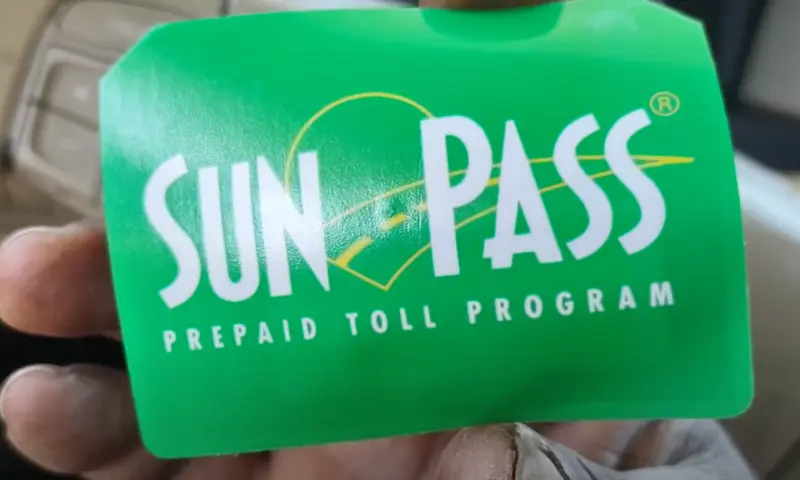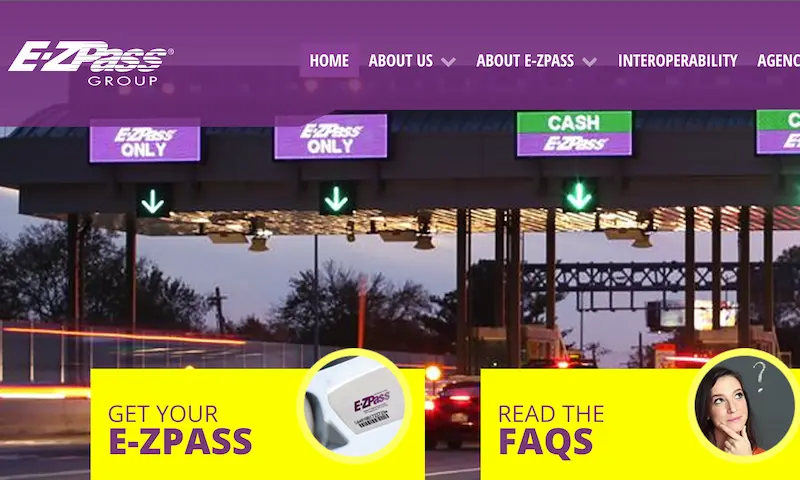Is your E-ZPass leaving you stranded at toll booths while cars pile up behind you? Nothing’s quite as frustrating as watching that toll gate stay firmly shut when you’re in a rush. But don’t worry—most transponder issues have simple fixes you can handle yourself.
Let’s explore why your E-ZPass might be acting up and what you can do to get back to smooth sailing through those toll lanes.
Tell-Tale Signs Your E-ZPass Isn’t Working
You know something’s wrong when:
- The toll booth light flashes red instead of green
- You see messages like “Call E-ZPass” or “Toll Not Paid”
- Your transponder starts beeping randomly
- Toll violation notices arrive in your mailbox despite having a funded account
That high-pitched beeping is especially important—it’s your transponder’s way of telling you its battery is failing. Don’t ignore these warnings, as they’ll only get worse!
Dead Battery: The #1 Culprit
E-ZPass transponders contain batteries that can’t be replaced—and this is by far the most common reason for failures.
Your transponder’s battery typically lasts 8-15 years, but when it starts to go, you’ll notice:
- Inconsistent readings at toll booths
- Random beeping sounds
- Complete failure to register when passing through tolls
“I thought my account had issues until I realized my transponder was 12 years old,” says one Reddit user. “The occasional beeping was actually a warning I’d been ignoring for months!”
How to Fix It:
Contact your state’s E-ZPass customer service center for a free replacement. Most agencies will mail you a new transponder within 2-3 business days. You’ll need to return the old one (preferably wrapped in aluminum foil to prevent accidental readings).
Mounting Mistakes That Block Signals
Think of your transponder as needing a clear “line of sight” to communicate with toll readers. Incorrect placement is a major cause of failures.
The Perfect Placement
For most vehicles, your transponder should be mounted:
- 1 inch below the top edge of the windshield
- 1 inch to the right of your rearview mirror
- Centered in the black dotted area (called “frits”) at the top of your windshield
This position allows for optimal signal transmission without dashboard or windshield frame interference.
Special Note for Newer Vehicles (2020+)
If you drive a newer vehicle, especially luxury brands like Tesla, BMW, or Mercedes, you need to be extra careful with placement. These cars often have special windshield coatings that block transponder signals.
Critical tip: Mount your transponder directly ON the black dots (frits) rather than below them. This area is specifically designed to allow radio signals to pass through.
Windshield Technology Working Against You
Modern vehicles often include windshield features that unintentionally block transponder signals:
| Windshield Feature | How It Affects E-ZPass | Vehicles Commonly Affected |
|---|---|---|
| Metallic/solar tinting | Blocks radio signals | Luxury vehicles, SUVs with premium packages |
| Heated windshields | Embedded wires interfere with transponder | Ford, Land Rover, Volvo |
| Low-E glass | Metal oxide coatings reflect signals | Tesla, BMW, Mercedes, many 2020+ models |
| UV protection | Certain coatings reduce signal strength | Most newer mid to high-end vehicles |
A BMW owner shared: “After three replacement transponders and countless toll violations, I finally discovered my windshield’s coating was blocking the signal. Moving it to the black dots area solved everything!”
Solutions for High-Tech Windshields:
- Relocate to the frits: Mount directly on the black dotted area at the top of your windshield
- Request an external transponder: Some states offer license plate or bumper-mounted options
- Check your vehicle manual: Some manufacturers specify alternate mounting locations
- Look for a “radio frequency window”: Some vehicles have a small section specifically designed for transponders
Account Issues Masquerading as Transponder Problems
Sometimes your transponder is fine, but account issues cause similar symptoms:
- Low balance: Many systems require a minimum balance (usually $10-25)
- Recent payment not processed: Online payments can take 24-48 hours to register
- New transponder not activated: Did you register your new device?
- Account suspension: Unpaid violations can trigger automatic holds
Check your account online before assuming hardware problems. A quick balance top-up might be all you need.
External Factors Causing Problems
Your transponder might struggle because of:
- Driving too fast through toll plazas (yes, this matters!)
- Faulty toll readers at specific locations (if it only happens at one toll, the problem might not be yours)
- Obstructions like GPS units, dashcams, or snow covering the transponder
- Metal sun visors blocking signals when deployed
Quick Checks:
- Make sure nothing metallic is near your transponder
- Clean your windshield where the transponder is mounted
- Remove any aftermarket devices that might cause interference
Getting a Replacement Transponder
If troubleshooting fails, it’s time for a replacement. Most agencies offer several options:
Online Replacement
- Log into your E-ZPass account
- Look for “Transponder Management” or “Order Replacement”
- Follow the prompts to request a new device
Phone Replacement
Call your state’s E-ZPass customer service:
- Virginia: 1-877-762-7824
- New York: 1-800-333-8655
- Pennsylvania: 1-877-736-6727
- New Jersey: 1-888-288-6865
- Maryland: 1-888-321-6824
In-Person Replacement
Visit a customer service center for immediate replacement. Bring:
- Your current transponder
- Account information
- Photo ID
Most agencies provide free replacements for battery failures or manufacturing defects. Lost or damaged transponders typically cost $10-20 to replace.
Alternative Mounting Solutions
If windshield mounting continues to fail despite your best efforts:
License Plate Transponders
Some states offer special transponders that mount to your front license plate. These work well for vehicles with problematic windshields but may not be available in all regions.
Bumper Mounting
External transponders can be attached to your front bumper, completely avoiding windshield interference issues. These are particularly useful for commercial vehicles or cars with specialized windshields.
Temporary Workarounds
If all else fails, you can:
- Keep your transponder in your glove compartment
- Hold it up against the windshield when approaching toll booths
- Return to your normal mounting position once through
This isn’t ideal but works in a pinch while you arrange a permanent solution.
Preventing Future E-ZPass Problems
To keep your E-ZPass working smoothly:
- Check your transponder occasionally for beeping or unusual behavior
- Keep track of its age and request a replacement after 7-8 years
- Maintain adequate account balance with auto-replenishment
- Update your vehicle information when you change cars
- Clean your windshield regularly where the transponder is mounted
Taking these simple steps will help ensure smooth sailing through toll plazas for years to come.
Remember that E-ZPass systems are designed for convenience—when they work properly, you’ll barely notice them. But when problems arise, addressing them quickly saves you from the headache of toll violations and account issues down the road.
















